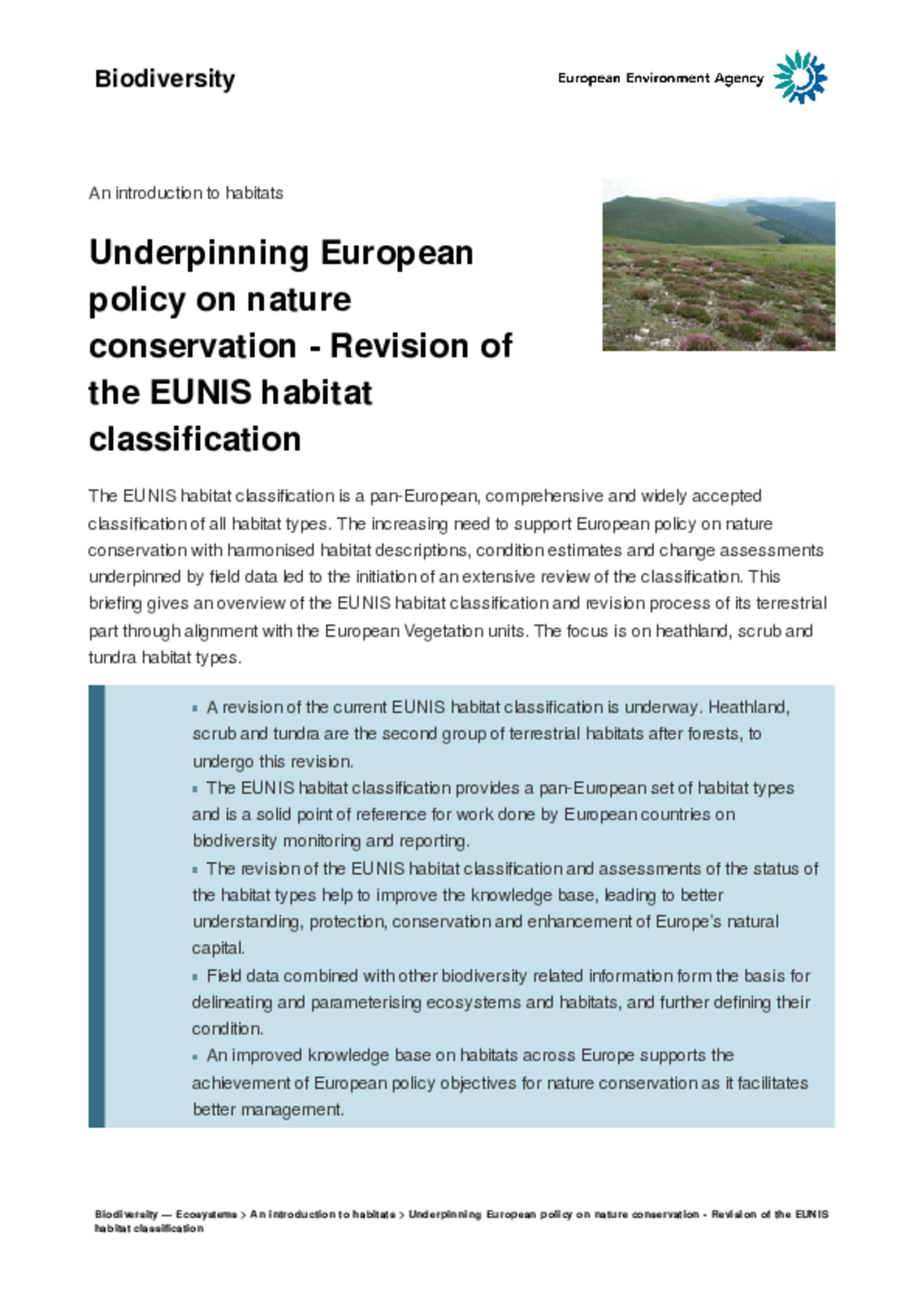All official European Union website addresses are in the europa.eu domain.
See all EU institutions and bodiesBriefing 2/2017
The EUNIS habitat classification is a pan-European, comprehensive and widely accepted classification of all habitat types. The increasing need to support European policy on nature conservation with harmonised habitat descriptions, condition estimates and change assessments underpinned by field data led to the initiation of an extensive review of the classification.
This briefing gives an overview of the EUNIS habitat classification and revision process of its terrestrial part through alignment with the European Vegetation units. The focus is on heathland, scrub and tundra habitat types.
ISBN: 978-92-9213-855-4

